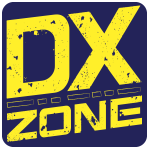The Q65 Mode
WSJT-X 2.4.0 introduces Q65, a digital protocol designed for minimal two-way QSOs over especially difficult propagation paths. On paths with Doppler spread more than a few Hz, the weak-signal performance of Q65 is the best among all WSJT-X modes. Q65 is particularly effective for tropospheric scatter, rain scatter, ionospheric scatter, and EME on VHF and higher bands, as well as other types of fast-fading signals.
Q65 uses 65-tone frequency-shift keying and builds on the demonstrated weak-signal strengths of QRA64, a mode introduced to WSJT-X in 2016. Q65 differs from QRA64 in the following important ways:
A new low-rate Q-ary Repeat Accumulate code for forward error correction
User messages and sequencing identical to those in FST4, FT4, FT8, and MSK144
A unique tone for time and frequency synchronization. As with JT65, this “sync tone” is readily visible on the waterfall spectral display. In addition, Q65 provides a sensitive “sync curve” near the bottom of the waterfall window. Unlike JT65, synchronization and decoding are effective even when meteor pings or other short signal enhancements are present.
Optional submodes with T/R sequence lengths 15, 30, 60, 120, and 300 s and different tone spacings.
A new, highly reliable list-decoding technique for messages that contain previously copied message fragments. No use is made of a callsign database.
Highly effective message averaging for situations where single transmissions are too weak to be decoded.
A “multi-decode” option that attempts to decode all Q65 signals in the received passband.
About WSJT-X
WSJT-X is a computer program designed to facilitate basic amateur radio communication using very weak signals.
WSJT-X Version 2.4 offers 13 different protocols or modes: FT4, FST4 and FST4W, FT8, JT4, JT9, JT65, Q65, QRA64, ISCAT, MSK144, WSPR, and Echo. The first eight are designed for making reliable QSOs under weak-signal conditions. They use nearly identical message structure and source encoding. JT65 and QRA64 were designed for EME (“moonbounce”) on the VHF/UHF bands and have also proven very effective for worldwide QRP communication on the HF bands


